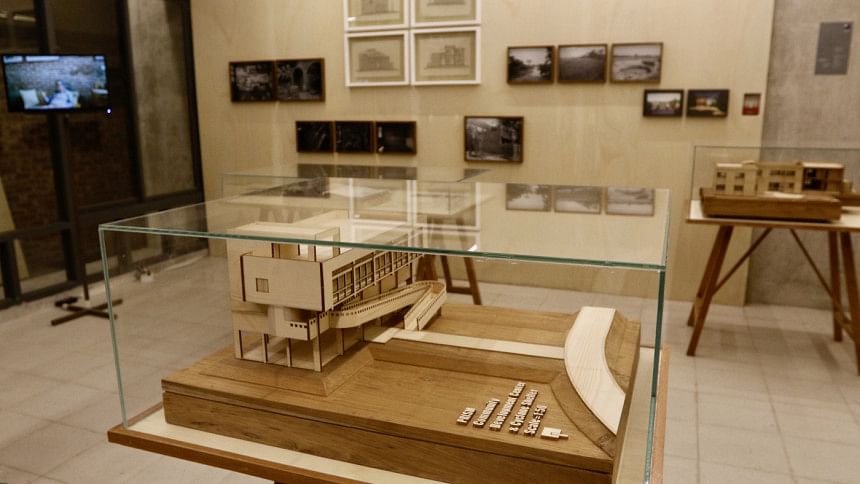Wishing Tree: Chobi Mela’s tribute to architect Bashirul Haq

Noted architect Bashirul Haq passed away in April 2020. He had designed DrikPath Bhobon, the venue for this year's "Chobi Mela". "Wishing Tree", an exhibition featuring Haq's seminal works, is being hosted at the festival, in honour of him. It is curated by Sarker Protick, Tanzim Wahab, and A S M Rezaur Rahman. Both the entries to the building lead to the floor dedicated to Haq's works.
One of the most significant contributions of Haq to Bangladeshi architecture was establishing a deep-rooted connection with the local contexts, through a rich blend of tradition and modernity. He always strived to find a language that is contemporary yet responsive to local culture and climate, creating contextual forms. Over 45 years of practice, he designed more than 250 buildings.
'Wishing tree' or Kalpataru is a concept that keeps recurring in the writings of Haq, deriving from the Indian mythological concept. The exhibition showcases his works along with the elements that inspired him. His surroundings played major roles in his works. Hand drawn architectural plans, models, writings, and other glimpses of Haq's works are on display for the audience to get a comprehensive idea about the architect and his work.
He was not just an architect who dealt with materials. He was a poet and an artist, who worked with an orchestra of objects, and put them into conversations with their surroundings. His sensitive use of bricks as a building material tells complex architectural stories.
During a publication ceremony of his biography in 2019, Haq had mentioned, "I've always tried to draw a link between my life experiences and my designs from my childhood in rural Bangladesh to my architectural training and modernism and to see how this can manifest itself in a kind of regional practice."
He carried out extensive research on climate, local people, and the landscape of Bangladesh. He grew a particular interest for Bengal's rural landscape. Following the devastating cyclone in Bangladesh in 1991, his firm, Bashirul Haq and Associates, was commissioned to design three community development centres and cyclone shelters in Cox's Bazar. The project was shortlisted for the Aga Khan Award for Architecture in 1994.
In 2004, Haq was commissioned to design the new campus for the school of music and dance at Chhayanaut in Dhanmondi. He also designed other institutional buildings in Dhaka, like the campus for Sunbeams School in 2007 and East West University in 2012. Plans and models of most of these are on display in the festival.
Haq's other two notable projects, his own residence and studio and the Bhatshala House, were also shortlisted for the award in 1980 and 1992, respectively. According to his associates, he expressed sensitivity for the domestic realm through the use of natural light, greenery and tactility of the building materials. In the architect's own words, "The future of architecture is hinged on what constitutes sustainable architecture – an architectural footprint that trod carefully in nature."
Unfortunately, only a handful of resources are available on his work, which he developed over the last four decades. There is a serious scarcity of architectural literature in Bangladesh. Architect, architectural historian and urbanist Adnan Morshed Khan had written about Haq in an article for The Daily Star, "His works can be a pivot to foster the production of 'local' knowledge about the Bengal delta and its habitat."
DrikPath Bhobon was the last of Haq's projects. The rooftop of the building oversees the Jatiya Sangsad Bhaban. One might wonder if it sets a conversation between the architects Bashirul Haq, Muzharul Islam and Louis Kahn.

 For all latest news, follow The Daily Star's Google News channel.
For all latest news, follow The Daily Star's Google News channel. 



Comments